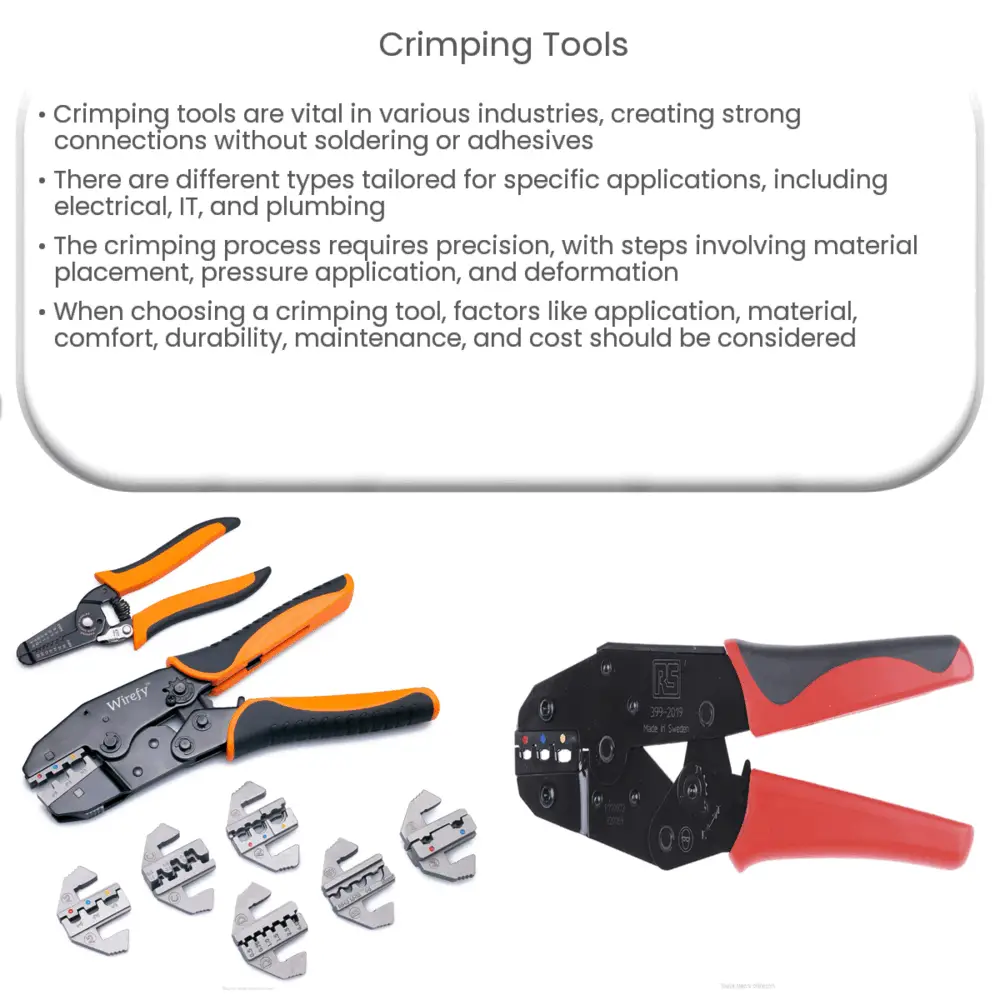Explore the world of crimping tools, their types, usage in various industries, and tips on selecting the right one for your needs.

Introduction to Crimping Tools
Crimping tools are an essential part of many industries, with their primary purpose being to conjoin two pieces of metal by deforming one or both of them to hold the other. This process, known as ‘crimping’, creates a strong, reliable connection without the need for soldering or additional adhesives.
Types of Crimping Tools
There are several types of crimping tools available, each tailored for specific applications or industries. Here, we’ll delve into some of the most common ones:
The Crimping Process
Crimping may seem straightforward, but it’s an intricate process that needs precision and accuracy. Let’s break it down into a simplified series of steps:
While the process may vary slightly depending on the specific tool and application, these general steps remain largely the same.
Choosing the Right Crimping Tool
Selecting the right crimping tool for your needs requires careful consideration. Important factors to consider include the specific application, the materials being worked with, and the required strength of the connection. Furthermore, ergonomics and comfort are crucial, especially for those using the tool frequently.
End of Part 1
Ergonomics and Durability
In terms of ergonomics, the right crimping tool should fit comfortably in your hand and not cause strain or discomfort with prolonged use. Tools with cushioned grips and spring-loaded handles can significantly reduce hand fatigue. Also, the tool should be lightweight, yet robust enough to withstand the rigors of daily use.
Durability
Durability is another key aspect to consider when choosing a crimping tool. The best tools are made from high-quality materials, like hardened steel, that can withstand the pressure of crimping without deforming. The crimping jaws should be hard enough to deform the materials being crimped but should not wear or break easily.
Maintaining Your Crimping Tool
Proper maintenance is crucial to ensure the longevity of your crimping tool. Regular cleaning to remove dust and debris, lubrication of moving parts, and timely replacement of worn-out components are all part of an effective maintenance routine.
Price and Availability
Lastly, price and availability are essential factors. While it can be tempting to opt for the cheapest option, remember that a good crimping tool is an investment. Opting for quality over price can save you money in the long run as it is likely to last longer and perform better.
Conclusion
In conclusion, crimping tools are invaluable in various industries, from electrical and IT to plumbing. They create strong, secure connections without the need for additional adhesives or soldering. The process of choosing the right crimping tool involves considering the application, material, comfort, durability, maintenance, and price. Remember, investing in a high-quality crimping tool can lead to better performance, longer lifespan, and ultimately, a more efficient and effective work process. So, make your choice wisely and enjoy the benefits of a well-crimped connection!
End of Part 2

